Wednesday Jun 21, 2023
🪑 You May Address the Chair: What we sit in tells us what we stand for
🎙️ The Psychology of Chairs: Unveiling Culture, Personality, and Design 🪑🌍🧠
Disclaimer: 🚨 The Psychology of Chairs podcast is not a substitute for mental health treatment. If you are in need of professional help, please consult with a licensed therapist or psychologist. 🪑💙
Welcome to The Psychology of Chairs, where we delve into the captivating connection between furniture, culture, personality, and psychology. Join us on an enlightening exploration as we uncover the hidden messages embedded in the design and function of chairs. 🗣️💺
Did you ever stop to consider the profound impact that chairs have on our lives? From therapy sessions to movie sets, the presence of chairs is more than just utilitarian; it reflects our deep-seated visual language and societal values. We'll unveil the secrets behind why therapists typically sit on chairs and patients on couches, and how this simple arrangement carries profound psychological significance. 🌿🏢
In this podcast, we'll dive into the intersection of design and psychology, exploring how chairs become powerful indicators of personality, cultural attitudes, and our visions of the future. We'll examine the ongoing debate between classicists and modernists in architecture, as they embody contrasting views on style, function, and society. Discover how these philosophical differences play out in the world of furniture design. 🌎🎨
Join us as we pay homage to visionary designers such as Charles and Ray Eames, whose iconic Eames chair revolutionized the industry and became a timeless symbol of innovative design. Uncover the stories behind their creations and how they accurately predicted the future, even when their work was initially misunderstood. Explore the connection between their visionary thinking and the advent of the internet, as they intuited the world of hyper-connectivity before it became a reality. 🚀📐
Through the lens of chairs, we'll unlock the psychological and cultural dynamics that shape our society. Discover how chairs serve as barometers of style, reflecting the evolution of language, attitudes, and experiences. Explore the profound symbolism of chairs in politics, religion, film, storytelling, and more. Gain insights into the power of design to communicate values, create context, and shape our perception of brands and spaces. 🌟🎥
Why write about chairs? Because they offer a unique gateway into understanding the human psyche and our ever-changing world. Chairs are not mere objects; they embody the essence of time, tradition, and innovation. They tell stories of generations, social attitudes, technological advancements, and cultural shifts. They invite us to contemplate the deeper meanings behind our everyday surroundings. 📚✨
At Taproot Therapy, we recognize the importance of design in fostering healing environments. Our therapy practice embraces both the cutting-edge advancements in brain-based medicine and the timeless wisdom of holistic traditions. We invite you to join us on this podcast journey, where we unravel the fascinating tales that chairs have to share. 🌿🪑
Remember, while The Psychology of Chairs provides intriguing insights, it is not a substitute for professional mental health care. If you require support, we encourage you to seek guidance from licensed therapists or healthcare providers. Your well-being is paramount. 🙌💚
Ready to embark on this enlightening exploration of chairs and their psychological significance? Subscribe now to The Psychology of Chairs podcast and join us as we unravel the intricate connections between design, culture, and the human mind. 🎧🔍
For more information about Taproot Therapy and our holistic approach to mental health, visit our address at 🏢 2025 Shady Crest Dr, Suite 203, Hoover, AL 35216. Find directions on Google Maps: 🗺️ https://goo.gl/maps/cnverPNUPuxiPkbc8 🌱
To schedule an appointment or reach out for any inquiries, contact us at ☎️ (205) 598-6471, send a fax to 📠 205-634-3647, or email us at 📧 Admin@GetTherapyBirmingham.com. We're here to support your mental health journey. 💙✉️
Not everyone will notice these details, but they will still feel them. The things that we don’t notice often speak to us louder than the details we are trying to listen too. People feel the weight of furniture, they feel real wood grain is different than laminated compressed saw dust bard that has wood grain printed on it. People know if they saw this same chair at Target or if it is a unique, maybe weird, piece of art that makes them slow down and think. People feel these details even if they don’t exactly know why or what they feel. The spaces that we inhabit affect us unconsciously and I wanted Taproot to feel different. That’s why all the offices are so different at Taproot. The style of each office is based on the personality and perspective of each clinician.
Most of the styles of chair at Taproot come from the Modern and Mid Century period. These periods interest me because the celebrated design and inovation in furniture design and manufacturing even if all the designers in the movement could not quite agree on what it was. How did the Mid Century Modern and Modern furniture movement come about?
The History of the Chair
Medieval Period
During the medieval period, when the Catholic Church held significant influence, thrones and seats for bishops and popes featured ornate carvings, luxurious fabrics, and precious metals. The craftsmanship and materials used underscored the divine authority attributed to these figures. Intricate religious motifs, such as depictions of saints or biblical scenes, were often incorporated into the design, emphasizing their spiritual role. In the context of religious leadership, thrones and seats were designed to visually and symbolically distinguish bishops and popes from ordinary worshippers. Elaborate materials, intricate details, and grandeur were employed to convey their exalted positions. These designs reflected the prevailing artistic and cultural styles of their respective eras.
Industrial Period
During the Industrial Revolution, the mass production of chairs led to increased affordability and availability. This shift in manufacturing techniques made chairs more accessible to the middle and working classes, allowing them to enjoy the comfort and convenience of seating that was previously reserved for the wealthy. As economic values shifted towards industrialization and mass production, the emphasis on efficiency and cost-effectiveness influenced chair design.
Modernist Period
The mid-20th century saw the rise of consumer culture and the development of new materials and manufacturing processes. With the increasing availability of resources and the desire for comfort and style, chairs became more than just functional items. They became a means of self-expression and a reflection of individual taste and lifestyle. The introduction of innovative materials and production techniques allowed for the creation of chairs that catered to different economic segments and societal needs. During periods of austerity or war, chair design often shifted towards simplicity and functionality, prioritizing utility over elaborate ornamentation. The minimalist designs of the post-World War II era, influenced by the need for practicality and rebuilding, reflected a societal shift towards simplicity, efficiency, and the rejection of excess.
In recent years, as sustainability and environmental consciousness have gained prominence, chair design has adapted to reflect these changing societal values. Designers have embraced eco-friendly materials, renewable resources, and sustainable production methods, aligning with the growing desire for environmentally responsible products. The focus on durability, recyclability, and ethical sourcing of materials has become integral to contemporary chair design.
What is Mid Century Modern Furniture
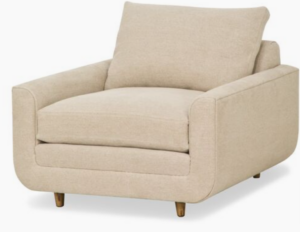 The Modernist Movement emerged as a response to the changing cultural landscape of the 19th century. Where older styles had been based on mimicking the power and extravagant resources of European nobility, now patients began to rethink the idea of what a chair is and what it could be. French and English styles went out of favor. Inspired by the principles of simplicity, functionality, and efficiency, new designers championed the idea of honesty in materials. By showcasing materials in their true form, devoid of unnecessary ornamentation, designers aimed to reflect the spirit of an evolving society. Things like gold, ornamentation and paint were not used to disguise wood. Instead wood was celebrated.
The Modernist Movement emerged as a response to the changing cultural landscape of the 19th century. Where older styles had been based on mimicking the power and extravagant resources of European nobility, now patients began to rethink the idea of what a chair is and what it could be. French and English styles went out of favor. Inspired by the principles of simplicity, functionality, and efficiency, new designers championed the idea of honesty in materials. By showcasing materials in their true form, devoid of unnecessary ornamentation, designers aimed to reflect the spirit of an evolving society. Things like gold, ornamentation and paint were not used to disguise wood. Instead wood was celebrated.
This led to the clean and stripped down archetypal design of modernism. One of the key aspects of mid century modernist design philosophy was the integration of manufacturing processes as part of design. Designers like the Eames understanding the capabilities and limitations of manufacturing processes, meant that they could create designs that were both efficient to produce and aesthetically pleasing. The used mass production not to make more money but make higher quality available to more people. This approach allowed them to create innovative and mass-produced furniture that was affordable and accessible to a wide audience.
Modern and postmodern design generally emphasized the importance of honesty in materials. Honesty of material means materials should be used in their truest form, showcasing their inherent qualities and characteristics. Don’t print plastic to look like wood, instead showcase all the neat things that you can only do with plastic. In the Eames Lounge Chair, molded plywood and leather upholstery, allows the natural grain and texture of the wood to be visible, and highlights the beauty of the materials instead of painting, printing, or covering it up.
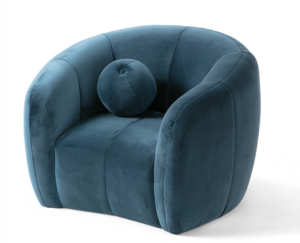 During the Cold War era, game theory and the ideological battle between the West and the East played a significant role in shaping the expressive styles within the Modernist Movement. Mathematician John Nash's game theory influenced design to embrace individualism and personal expression as a response to perceived conformity in communist societies. This shift towards individuality fueled the emergence of unique and expressive works.
During the Cold War era, game theory and the ideological battle between the West and the East played a significant role in shaping the expressive styles within the Modernist Movement. Mathematician John Nash's game theory influenced design to embrace individualism and personal expression as a response to perceived conformity in communist societies. This shift towards individuality fueled the emergence of unique and expressive works.
Remarkably, the influence of intelligence agencies, such as the CIA, cannot be ignored when examining the development of the Modernist art movement. The CIA covertly supported various artistic endeavors during the Cold War, including the promotion of Modernist art. This involvement aimed to showcase the creative freedom and individualistic spirit prevalent in the West, serving as a cultural weapon against the perceived conformity of communist societies.
One prominent figure within the Modernist Movement is Adrien Pearsall, whose designs left an indelible mark on the era. Pearsall's furniture had water-like curling lines. Some of it looked like water and others looked like boats. Sofas became gondolas and rafts that could sail around a living room like it was a venetian canal. Pearsall's iconic creations showcased a harmonious blend of functionality, aesthetics, and comfort. His style influenced the Nagare (流, flow) design language of Mazda cars.

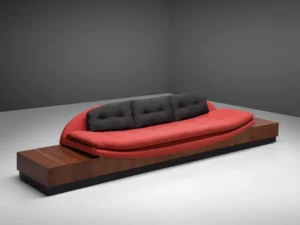

During the rise of the Modernist Movement, there was a strong emphasis on individual expression and the celebration of uniqueness. While some iconic Modernist pieces achieved a delicate balance between form and function, others prioritized individualistic aesthetics over practicality, resulting in furniture that may be visually striking but less comfortable or usable. I am a fan of the minimalism, honesty in materials, and more natural appearance of designers like Pearsall. The harsh chrome and confusing juxtaposed materials of La Corbusier and HR Gigerish coldness of Mies van der Rohe, I could do without. I see them as dead ends in design and one of the risks of over indulging a modernist tendency.
[caption id="attachment_3101" align="alignleft" width="300"]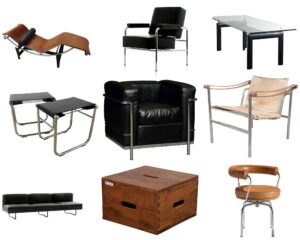 Mies van der NO![/caption]
Mies van der NO![/caption]
You won't see any chrome or fur at Taproot, but many hues of natural wood and leather. In fact, so many of our people bought the Kardiel Woodrow couches after they saw them at Taproot that Kardiel made us a brand ambassador. That was not expected or intended. If you are interested you can use the offer code TAPROOT at Kardiel.com. It helps us provide therapy to people at a reduced rate and you can get some nice furniture that will last longer than you.
German philosopher Hannah Arendt argued that humans exist in a condition of "natality," meaning that each person is born into a unique world and has the capacity to initiate something new. For Arendt, the world is the space where individuals can create and establish their own identities, engage with others, and participate in meaningful activities. Culture is formed through human activities such as labor, work, and action. The environment plays a crucial role in shaping and influencing individuals' experiences. Arendt recognized that the world is a dynamic and interactive space that individuals engage with. The environment provides the context and conditions for human action and facilitates the development of individual and collective identities.
One of my favorite authors, Robert Pogue Harrison writes that design and architecture are not merely utilitarian or functional but are imbued with cultural and aesthetic significance. He suggests that our living spaces reflect and shape our sense of belonging, identity, and connection to the world. He examines the ways in which architecture and design influence our experience of "being at home" and the impact of our surroundings on our well-being. Regarding chairs, Harrison notes that they mediate between the body and the environment. He discusses how chairs provide a space of rest, comfort, and contemplation, influencing our posture, movements, and interactions with others. The tools we use, especially the most essential ones, are either successfully connecting you to growth and beauty or failing to.
Many people make the case that these lounge chairs cost exorbitant amounts of money and are a luxury for the ultra wealthy. Some of them are ostentatious or downright stupid but that is largely because they are either rare antiques or made by the few remaining companies that employ people to build things. Again, we have forgotten what design means. Most of the chairs that we have at Taproot I didn't pay a dime for. They belonged to friends and family who were moving out of their houses or onto the next life. Somewhere found at garage or estate sales like the Niels Moller Model 71 chairs in the Neurostim room. Sure they needed work but they were designed to be worked on forever. Things we love need work. Things with no value we throw away. I had no problem dis and re assembling them into pieces because they were designed to be timeless not replaced next year.
I have tried and failed to put together a brand new $500 table from modern furniture companies without breaking it. That's fine, Wayfair will send you a new one for free because they know what it is worth. I was able to refinish and reupholster the antiques at Taproot for $30 in a few days. I could have sold them on Etsy, but I would rather share them with everyone who walks through the door. They were my late godmother's and I don't have room for them at home. My Godmother loved Carl Jung, labyrinths and depth psychology. I think of her when I see them and know she is still here. Myself and other therapists I work with have worked in practices that threw out and replaced more of an investment in Wayfair furniture annually than I spent to set up our entire practice. My kids will inherit that furniture. The chairs connect me and you and one day my children to the beautiful person my godmother was.
[caption id="attachment_3100" align="alignleft" width="284"]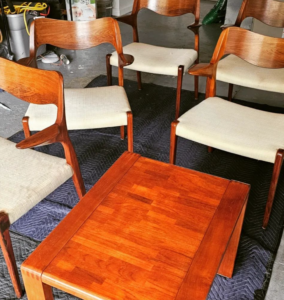 Repairing some furniture in the garage.[/caption]
Repairing some furniture in the garage.[/caption]
Isn't it fun to sit with these ideas for a minute and remember a time when people made things out of love and for the sake of art and self discovery. What does it do to our mental health to live in a world where everything we eat, watch, put in our house and live in has become dispensable disposable garbage. We have forgotten what design means. People will talk about the beautiful "design" of an iPhone and then throw it away in a few month when the next one has rounder corners. Good design is timeless, even if it is the timeless experience of remembering the way a meal was plated or how it tasted. It lasted. Some beautiful designs of soft and hardware come out of Silicon Valley. I still wax nostalgic about my candy bar Sony Erickson college phone, but I'm weird. Realistically how many of you are framing photos and treasuring memories of each generation of iPhone that broke when you sat on it because it wasn't a chair. Generally most of high technology "innovations" are just disguises for triggering humanities worst addictive, obsessive, and competitive tendencies.
The reason for this is right there in the back of the iPhone. Designed by Apple in California! and then in tiny print made in china. Manufacturing is part of design. Or it was. We think that design is something that we can dream up in a vacuum and then outsource all the nitty gritty details of realizing our vision to someone else. As Charles and Ray Eames discovered when they built their first chair. You design it as you are manufacturing it. The design for their first chair was too hard for them to build themselves, so they started over with something the two of them could build before they sent it to a manufacturer. They wanted what they built to last and enrich the lives of those who used it. They weren't trying to sell you an Eames chair every year. They wanted to see the future for the beauty of what that future could be, not to sell it too you. The American brands without planned obsolescence, like Maytag Appliance, have gone bankrupt and been sold off. Prophets and profits are not the same thing. Humans want to live in the ego alone. We want to live within fads, and trends. Hyperconsuming free market capitalism exploits this. It is why consumerist capitalism will always skew aesthetic taste towards thoughtlessly modernist design and planned obsolescence. People are threatened by the things that take away their ego's control and point them back to a timeless reality and our own personal insignificance in the face of the numinous.
I like good design because it points us back to a greater psychological, spiritual and transcendental reality. I believe that we can build a better world than one where all of our interactions with people and the spaces we inhabit are not merely transactions. We need to rethink where we assign value and where we place our identity. We need to admit that the places we live and work in effect us and are worth our mindful attention. Not just as practical considerations but as intuitive creative projects for us to find our own and our collective humanities soul. Modernist designers sought to break away from traditional forms and create furniture that embodied their personal visions. This approach resonated with the American spirit of individualism. Breaking old ideas is always a risk but creation is a risky business. Good design is timeless because it comes from timeless elements and forms in the human psyche. It may take generations to map these unseen realms of our collective humanity through our intuition. We don't always know good design when we see, but I would argue we know it when we feel. Even more so, we know it when it sticks around. Arendt and Harrison are correct that changing our self begins with changing our environment and vice versa. If you want to change your life start by changing your chair.
If you want to dip your toe into the water of modernist furniture here is a designer cheat sheet to get you started.
What are the Major Mid Century Modern Style of Furniture
Mid-century modern furniture encompasses various design movements and styles. Here's an explanation of some of the key design movements associated with mid-century modern furniture:
Bauhaus:
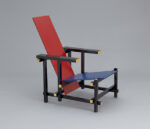 The Bauhaus movement, founded in Germany in 1919, had a significant influence on mid-century modern design. It emphasized the fusion of art, craft, and technology. Bauhaus furniture featured clean lines, geometric forms, and the innovative use of materials like tubular steel. Designers such as Ludwig Mies van der Rohe and Marcel Breuer were associated with the Bauhaus movement and created iconic pieces like the Barcelona Chair and the Wassily Chair.
The Bauhaus movement, founded in Germany in 1919, had a significant influence on mid-century modern design. It emphasized the fusion of art, craft, and technology. Bauhaus furniture featured clean lines, geometric forms, and the innovative use of materials like tubular steel. Designers such as Ludwig Mies van der Rohe and Marcel Breuer were associated with the Bauhaus movement and created iconic pieces like the Barcelona Chair and the Wassily Chair.
Danish Modern:
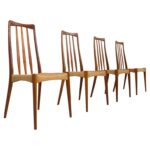 Danish Modern design emerged from Denmark in the mid-20th century and is known for its craftsmanship, functionality, and simplicity. Designers like Hans Wegner, Arne Jacobsen, and Børge Mogensen were instrumental in defining this style. Danish Modern furniture often features organic forms, sculptural shapes, and the use of high-quality woods like teak and rosewood. Iconic examples include the Shell Chair by Hans Wegner and the Egg Chair by Arne Jacobsen.
Danish Modern design emerged from Denmark in the mid-20th century and is known for its craftsmanship, functionality, and simplicity. Designers like Hans Wegner, Arne Jacobsen, and Børge Mogensen were instrumental in defining this style. Danish Modern furniture often features organic forms, sculptural shapes, and the use of high-quality woods like teak and rosewood. Iconic examples include the Shell Chair by Hans Wegner and the Egg Chair by Arne Jacobsen.
Scandinavian Design:
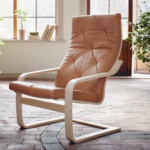 While Danish Modern is a part of Scandinavian design, this broader design movement encompasses the styles of other Nordic countries as well. Scandinavian design emphasizes minimalism, functionality, and natural materials. Light woods, such as birch and pine, are commonly used. Clean lines and simplicity are prominent features. The work of designers like Alvar Aalto from Finland and Bruno Mathsson from Sweden contributed to the popularity of Scandinavian design during the mid-century modern period.
While Danish Modern is a part of Scandinavian design, this broader design movement encompasses the styles of other Nordic countries as well. Scandinavian design emphasizes minimalism, functionality, and natural materials. Light woods, such as birch and pine, are commonly used. Clean lines and simplicity are prominent features. The work of designers like Alvar Aalto from Finland and Bruno Mathsson from Sweden contributed to the popularity of Scandinavian design during the mid-century modern period.
Arts and Crafts:
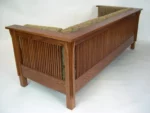 The Arts and Crafts movement emerged as a response to the mass production and industrialization of the Victorian era. Advocates of the movement, including Stickley and the Greene brothers, sought to revive traditional craftsmanship and celebrate the beauty of handmade objects. They emphasized the importance of skilled artisans and the integration of art into everyday life. Gustav Stickley, an American furniture maker, established his own furniture company, Stickley Brothers, in the late 19th century. He became a leading figure in the Arts and Crafts movement, promoting a style that emphasized simplicity, functionality, and the use of natural materials. Stickley's chairs often featured solid construction, exposed joinery, and handcrafted details.
The Arts and Crafts movement emerged as a response to the mass production and industrialization of the Victorian era. Advocates of the movement, including Stickley and the Greene brothers, sought to revive traditional craftsmanship and celebrate the beauty of handmade objects. They emphasized the importance of skilled artisans and the integration of art into everyday life. Gustav Stickley, an American furniture maker, established his own furniture company, Stickley Brothers, in the late 19th century. He became a leading figure in the Arts and Crafts movement, promoting a style that emphasized simplicity, functionality, and the use of natural materials. Stickley's chairs often featured solid construction, exposed joinery, and handcrafted details.
Organic Design:
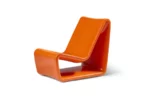 Organic design, associated with the work of designers like Charles and Ray Eames, sought to bring nature-inspired elements into furniture. Organic forms, flowing lines, and the use of molded plywood and fiberglass were key characteristics. The Eames Lounge Chair and Ottoman, with its molded plywood shell and luxurious upholstery, is a quintessential example of organic design.
Organic design, associated with the work of designers like Charles and Ray Eames, sought to bring nature-inspired elements into furniture. Organic forms, flowing lines, and the use of molded plywood and fiberglass were key characteristics. The Eames Lounge Chair and Ottoman, with its molded plywood shell and luxurious upholstery, is a quintessential example of organic design.
International Style:
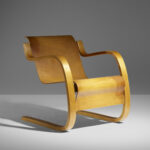 The International Style emerged in the 1920s and 1930s and influenced mid-century modern design. It emphasized simplicity, functionality, and the absence of ornamentation. Steel, glass, and concrete were commonly used materials. Architects and designers like Le Corbusier and Walter Gropius played a significant role in promoting the International Style and its impact on furniture design.
The International Style emerged in the 1920s and 1930s and influenced mid-century modern design. It emphasized simplicity, functionality, and the absence of ornamentation. Steel, glass, and concrete were commonly used materials. Architects and designers like Le Corbusier and Walter Gropius played a significant role in promoting the International Style and its impact on furniture design.
Who Were the Major Mid Century Modern Furniture Designers?
Hans Wegner:
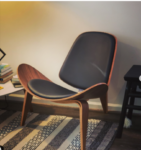 Danish furniture designer, is often referred to as the "grandfather of chairs" due to his immense contributions to the field of chair design. His innovative and timeless chair designs have had a profound impact on the furniture industry and continue to be revered and admired to this day.
Danish furniture designer, is often referred to as the "grandfather of chairs" due to his immense contributions to the field of chair design. His innovative and timeless chair designs have had a profound impact on the furniture industry and continue to be revered and admired to this day.
Wegner gained recognition and acclaim for his ability to create chairs that seamlessly combined form and function. He had a deep understanding of the human body and ergonomics, which allowed him to design chairs that were not only visually appealing but also comfortable and supportive. Wegner believed that a chair should be a perfect balance of aesthetics, functionality, and comfort.
Wegner was also known for his exploration of various materials and production techniques. He worked extensively with wood, especially oak and teak, using traditional craftsmanship methods. His chairs showcased the natural beauty of wood and displayed intricate joinery techniques, which became hallmarks of his designs. Wegner's meticulous attention to detail and his commitment to high-quality craftsmanship elevated his chairs to the realm of functional art.
Arne Jacobsen:
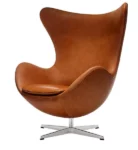 Celebrated for his minimal, simple, and distinct lounge chair designs. Notable pieces include the Egg Chair, Swan Chair, and Swan Sofa.
Celebrated for his minimal, simple, and distinct lounge chair designs. Notable pieces include the Egg Chair, Swan Chair, and Swan Sofa.
Eero Aarnio:
![]() Known for his innovative furniture designs in the 1960s, particularly his plastic and fiberglass chairs. Explore the iconic Ball Chair, Bubble Chair, and more.
Known for his innovative furniture designs in the 1960s, particularly his plastic and fiberglass chairs. Explore the iconic Ball Chair, Bubble Chair, and more.
Eero Saarinen:
![]() A Finnish American architect and industrial designer renowned for his mastery of varying styles. Discover his iconic designs, including the "Womb" chair and the "Tulip" or "Pedestal" group.
A Finnish American architect and industrial designer renowned for his mastery of varying styles. Discover his iconic designs, including the "Womb" chair and the "Tulip" or "Pedestal" group.
Eileen Gray:
 A multifaceted artist known for her independent spirit and contributions to furniture design. Explore her notable works, such as the Bibendum Chair and the Eileen Gray Side Table. You might recognize her transat chair as the one that Fredo cant sit up in when he confronts his brother in The Godfather Part 2.
A multifaceted artist known for her independent spirit and contributions to furniture design. Explore her notable works, such as the Bibendum Chair and the Eileen Gray Side Table. You might recognize her transat chair as the one that Fredo cant sit up in when he confronts his brother in The Godfather Part 2.
George Nelson:
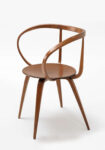 One of the founding fathers of American Modernism, renowned for his contributions to cleaner urban design. Explore his well-known Modern Classic Furniture designs, including the Nelson Bench, Coconut Chair, and Marshmallow Sofa.
One of the founding fathers of American Modernism, renowned for his contributions to cleaner urban design. Explore his well-known Modern Classic Furniture designs, including the Nelson Bench, Coconut Chair, and Marshmallow Sofa.
Isamu Noguchi:
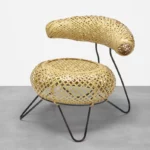 A sculptor known for his flowing interconnectivity, reflected in his iconic Noguchi Table. Discover his collaborations with other midcentury designers in our extensive collection.
A sculptor known for his flowing interconnectivity, reflected in his iconic Noguchi Table. Discover his collaborations with other midcentury designers in our extensive collection.
Le Corbusier:
 A Swiss architect, designer, and urbanist who played a pivotal role in the development of Modern architecture. Explore his iconic LC-2, LC-3, and LC-4 chairs and sofa sets.
A Swiss architect, designer, and urbanist who played a pivotal role in the development of Modern architecture. Explore his iconic LC-2, LC-3, and LC-4 chairs and sofa sets.
Ludwig Mies van der Rohe:
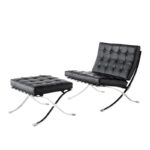 A German architect recognized as one of the pioneering masters of Modern Architecture.
A German architect recognized as one of the pioneering masters of Modern Architecture.
R
Website: https://gettherapybirmingham.com/
Check out the youtube: https://youtube.com/@GetTherapyBirminghamPodcast Website: https://gettherapybirmingham.podbean.com/
Podcast Feed: https://feed.podbean.com/GetTherapyBirmingham/feed.xml
Taproot Therapy Collective
2025 Shady Crest Drive | Hoover, Alabama 35216
Phone: (205) 598-6471
Fax: (205) 634-3647
Email: Admin@GetTherapyBirmingham.com
The resources, videos and podcasts on our site and social media are no substitute for mental health treatment. Please find a qualified mental health provider and contact emergency services in your area in the event of an emergency to a provider in your area. Our number and email are only for scheduling at Taproot Therapy Collective are not monitored consistently and not a reliable resource for emergency services.
#Jung #Therapy #psychology #EMD #DepthPsychology #anthropology #sociology #philosophy #mythology #psychology #psychotherapy

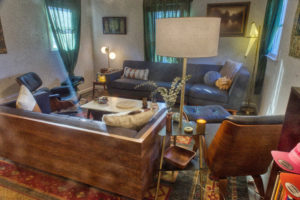
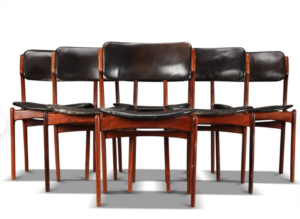
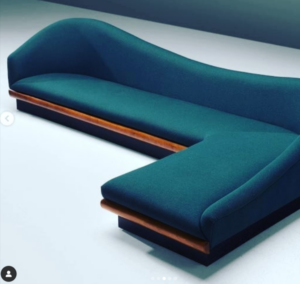
 This is my favorite chair
This is my favorite chair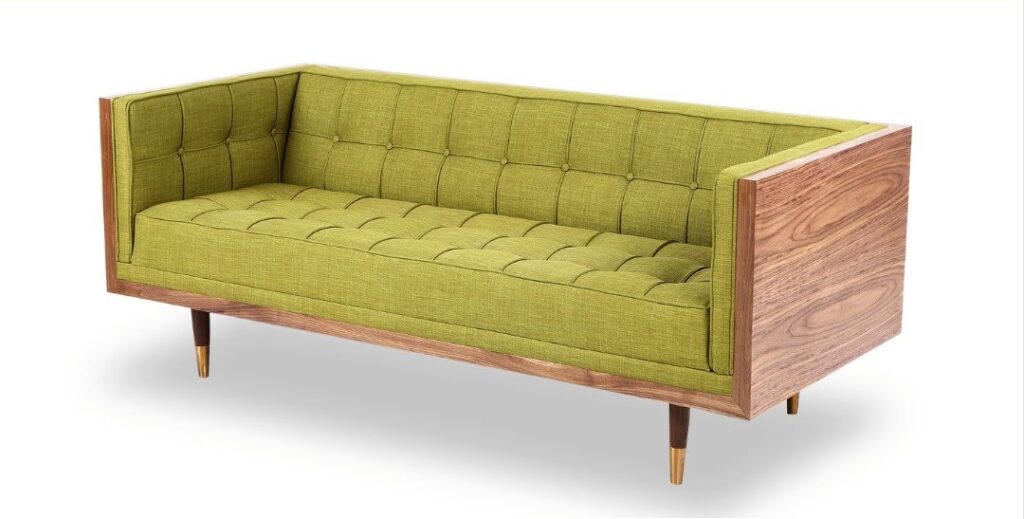
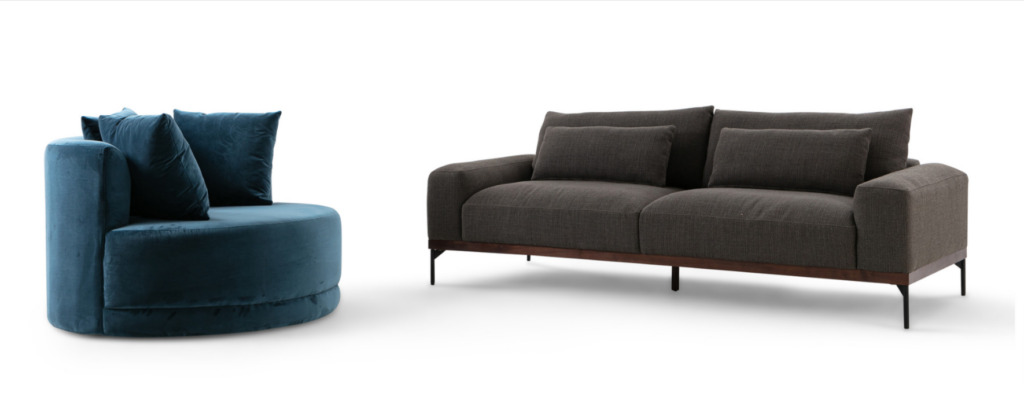
Comments (0)
To leave or reply to comments, please download free Podbean or
No Comments
To leave or reply to comments,
please download free Podbean App.